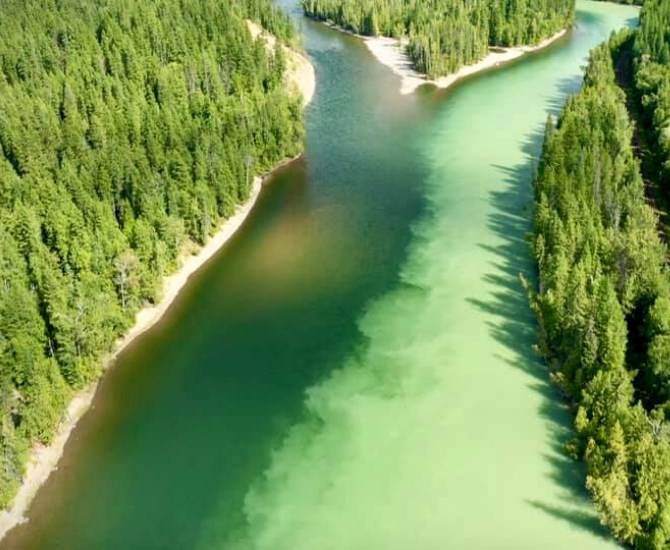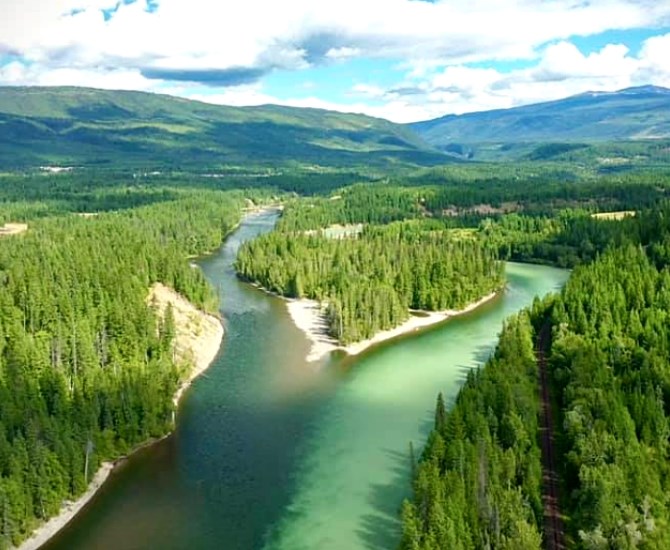
The light green coloured river is the North Thompson, originating from the Thompson Glacier. The darker water is the Clearwater River, which flows through Hobson Lake.
Image Credit: SUBMITTED / Boyet Añer
September 04, 2020 - 7:00 AM
It's an odd sight near Clearwater, B.C. at the point two rivers meet, clearly showing the results of their different paths by their distinctive colours, even in the singular water course.
What may not be so apparent is why.
While the Clearwater River is a dark green colour, the North Thompson river is a light, milky turquoise.
The reason behind their contrasting hues lies in where these rivers come from.
While both the North Thompson and the Clearwater Rivers are glacier-fed, there is one key difference that sets them apart.
The Clearwater River flows through lakes before it reaches the North Thompson, whereas the Thompson does not. This fact determines the amount of mineral material in the water.
"The different colour of those rivers is typically due to the different amounts of fine mineral material that’s suspended in the water,” Thompson Rivers University aquatic ecologist Brian Heiss said. "Ones that are low in suspended sediments typically have the darker or clearer appearance.”

The light green coloured river is the North Thompson, originating from the Thompson Glacier. The darker water is the Clearwater River, which flows through Hobson Lake.
Image Credit: SUBMITTED / Boyet Añer
The North Thompson flows directly from the Thompson Glacier, and contains fine particles eroded from the glacier suspended in the water, which creates the milky turquoise hue.
The glacial sediments in the Clearwater River are deposited as it flows through Hobson Lake and Clearwater Lake, making the water dark and clear. So, Clearwater River was aptly named.
The type and concentration of minerals suspended in lakes and rivers is typically what determines their hue, Heiss said.
Minerals are the reason why the Okanagan’s Kalamalka Lake is turquoise too.
The lake contains calcium carbonate left behind from receding glaciers, and when the water warms in the summer the calcium crystallizes. Sunlight reflects off these crystals creating the brilliant turquoise colour.
READ MORE: Check out aerial views of beautiful, turquoise Kal Lake
READ MORE: The summertime phenomenon that gives Kalamalka Lake its many colours
To contact a reporter for this story, email Brie Welton or call (250) 819-3723 or email the editor. You can also submit photos, videos or news tips to the newsroom and be entered to win a monthly prize draw.
We welcome your comments and opinions on our stories but play nice. We won't censor or delete comments unless they contain off-topic statements or links, unnecessary vulgarity, false facts, spam or obviously fake profiles. If you have any concerns about what you see in comments, email the editor in the link above.
News from © iNFOnews, 2020